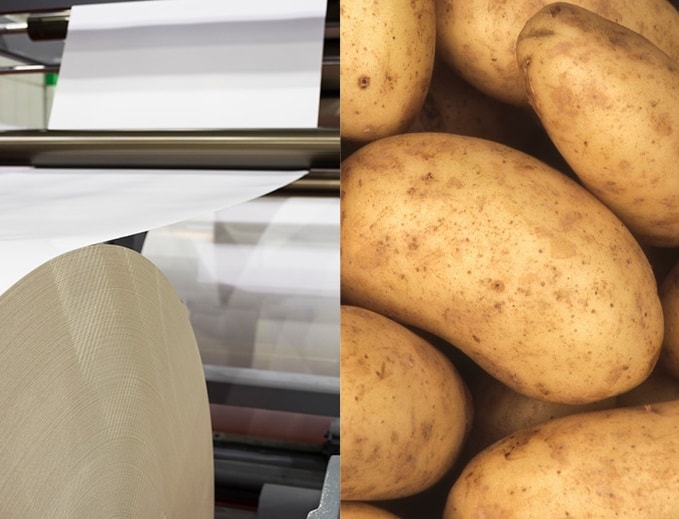As people become more aware of the substantial effect plastics have on the environment, organisations that distribute magazines, supplements and inserts in plastic wrap solutions are being challenged by readers, who want to see more sustainable solutions used. The two alternatives that are emerging as the ‘front-runners’ in the publishing industry are compostable magazine wrap and paper magazine wrap.
Compostable magazine wrap is manufactured from starch from any source, such as potato starch, corn starch, rice starch, etc. Starch can be classified as either virgin (i.e. derived from crops specifically grown for the purpose of starch production) or reclaimed (i.e. as a by-product from existing agricultural and/or food processing operations).
With its natural qualities, plus a huge movement in the publishing industry to make the switch from polywrap, there is no doubt that compostable magazine wrap is creating quite a buzz. With names like the National Trust, The Guardian newspaper and UNISON adopting compostable magazine wrap, it’s not surprising that other organisations are following suit. However, compostable magazine wrap does have some cons to its highly publicised pros.
Pros
- Eco-friendly magazine wrap alternative to single-use plastic i.e. compostable and biodegradable
- Durable – similar to polywrap in composition
- Can print messages on the outer wrap
Cons
- Not recyclable and may not be accepted by all local authorities in their waste streams
- Can contain fossil-based petrochemicals
- Doesn’t qualify for Royal Mail’s discounted Mailmark (due to it ‘milky’ appearance)
- It is more expensive than polywrap
- Harder to handle on machines
Another eco-friendly magazine wrap solution emerging as an alternative to polywrap is paper magazine wrap. Essentially, this option encloses magazines and inserts of varying sizes in paper. Established as 100% recyclable it is fully acceptable by waste systems. Paper magazine wrap also supports the zero-plastic movement, with iconic publications such as National Geographic opting for a paper wrap solution for subscribers in the U.S., U.K., or India as part of its Planet or Plastic? campaign. Indeed, paper magazine wrap does have multiple benefits, as explained below.
Pros
- Eco-friendly alternative to single-use plastic 100% recyclable
- Qualifies for Royal Mail’s discounted Mailmark service
- Personalisation of inserts available (more engagement opportunities with readers)
- Unlimited printing opportunities on the outer wrap
- Robust, durable and can withstand postal handling
Cons
- Not as lightweight and single-use plastic wrap or compostable magazine wrap
With a large print network, printing millions of pieces of electoral stationery and direct mail each year, UK Engage is a champion of the paper wrap solution (although as an environmentally conscious organisation, we support the transition away from single-use plastics in favour of all types of sustainable alternatives).
If you would like to discuss our paper wrap solution in more detail, please contact us today.
References:
National Geographic 2019, Why We’re Giving Up the Plastic Wrapper Around Our Magazine, accessed 10 May 2019 <https://www.nationalgeographic.co.uk/environment-and-conservation/2018/05/why-were-giving-plastic-wrapper-around-our-magazine>

